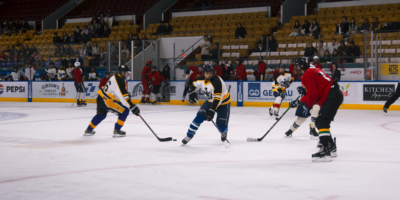There’s no such thing as bad weather, only bad clothing. Or so the saying goes. But anyone up here in Canada knows that that’s not entirely true. Although snow has already hit the pavement, there are still many weeks (or longer) before you have to retire your two-wheeled commuter for the season. Everyone has different weather tolerances so dressing properly for winter riding requires a bit of trial-and-error, especially during your first winter. However, a constant eye on the daily highs, lows, and chance of precipitation will help take some of the guess work out of the equation.
Layering is critical. Many thinner layer will allow you remove and add articles of clothing throughout the day. Around this time of year, the weather has an identity crisis. It can’t decide whether it’s Fall or Winter so it bounces between the two extremes. Layers can be shed and stuffed into a pack when the temperatures rise during the day, and can be put back on when the temperatures dip after sunset. Thin layers will also trap heat better than large bulky clothing. A decent rain jacket over everything will help keep the rain and wind out when the weather is particularly miserable. Cuffs with elastics or Velcro straps are essential to prevent cold air from running up your sleeves and cooling your core. The correct number of layers does depend on many factors so experiment with what is comfortable for you. A cold morning ride is a good indication for more layers the next day.
Cold extremities are the worse. Cold hands can limit your braking power and greatly reduce handling. If your hands are cold even with gloves on, it could be an indication of an inadequately insulated core. Your body will restrict blood flow to your extremities if it thinks that the core needs it. It’s a common mistake to wear thicker gloves as a solution to cold hands. Thin wind-proof gloves will keep the wind out while still allow for good dexterity for breaking. A pair of leather gloves over top of a pair of soft gloves are a great solution.
Cold, wet feet will ruin the rest of your day. There is not much worse than arriving at school with a pool of water sploshing around in your shoes. Extra socks are not the solution to this problem. Additional socks will cut off circulation to the feet and result in cold toes during the commute. Shoe covers are excellent in that they keep wind and water out of your shoes, but a cheap solution is a pair of socks over your shoes. It gives you an extra layer of protection from the elements.
The vents in your helmet do wonders in the summer to allow air flow to dry sweat from the head. A considerable amount of heat leaves through the head so blocking those vents would greatly help to keep you warm. A cycling cap worn underneath your helmet will help keep your head warm and dry. In fact, any covering underneath your helmet will help reduce heat loss through the head significantly by placing a barrier between the head and the incoming wind.
Keeping yourself dry is very important. Fenders over the rear wheel will keep that dirty skid mark off your back. Fenders over the front wheel will keep sand and water out of your face. Front fenders will also shield your legs from water coming off of the front wheel. Although fenders will keep you somewhat dry, nothing beats good rain gear. Water-proof pants and jackets will always keep you dry.
What works and what doesn’t will vary from person to person. These are just some things I do to make my winter riding as enjoyable as possible. There is this feeling of invincibility when riding in bad weather. It’s like you can conquer anything.




Leave a Reply